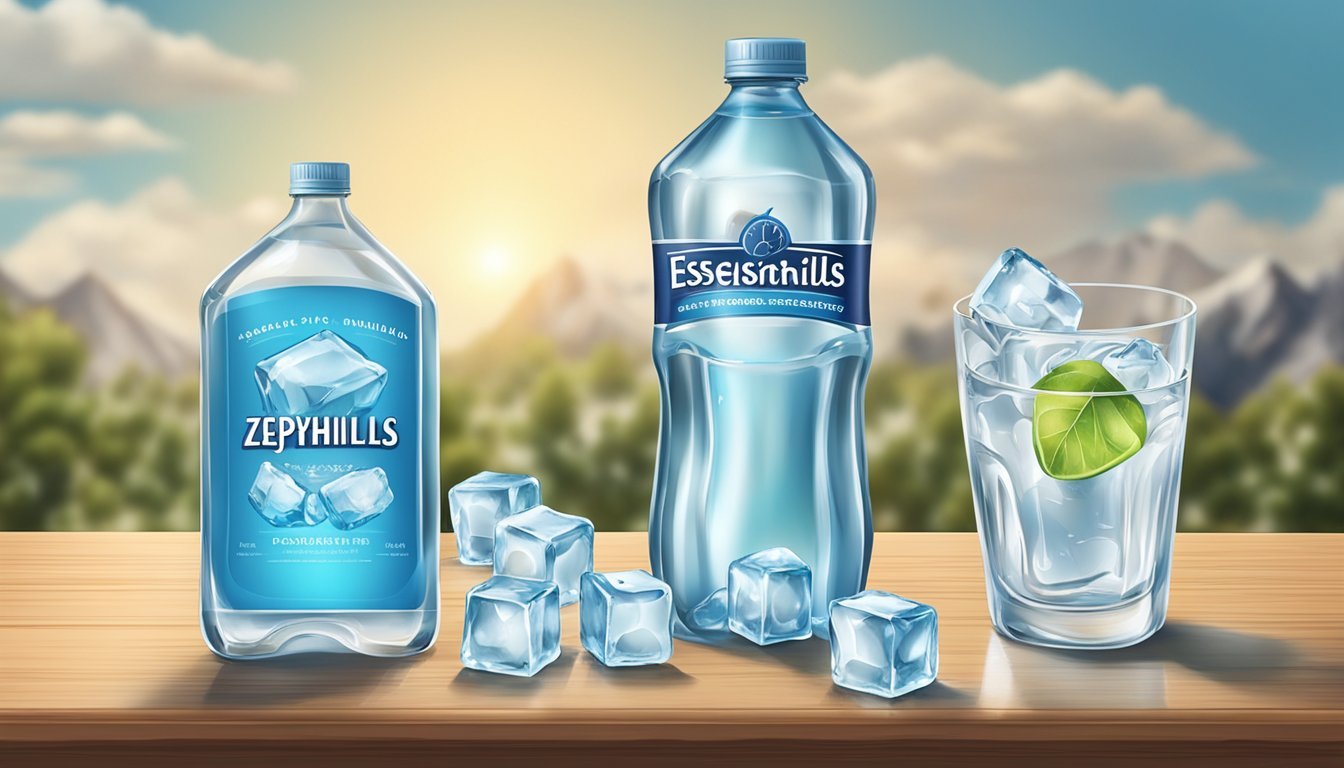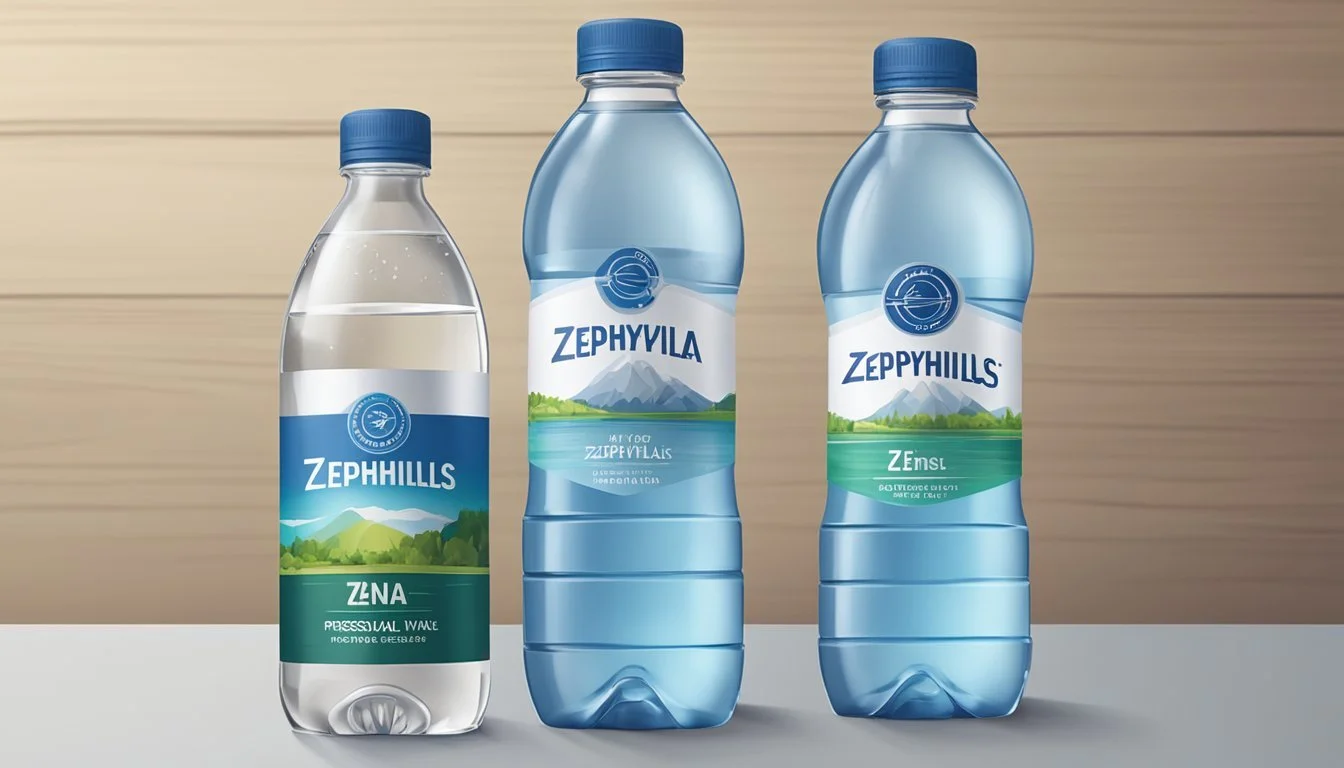Essentia vs. Zephyrhills
Comparing Quality and Taste in Bottled Water Brands
When it comes to bottled water, consumers often debate which brand provides the best quality for their hydration needs. Two notable contenders in this discussion are Essentia and Zephyrhills, both offering distinct qualities that set them apart in the bottled water market. Essentia is recognized for its high pH level of 9.5, achieved through a filtration process that includes micro-filters, reverse osmosis, and ultraviolet exposure, followed by electrolytes and ionization for an exceptionally clean taste. On the other hand, Zephyrhills draws its water from Florida springs, priding itself on providing natural spring water with a taste that reflects its regional sources.
Each brand appeals to different consumer values—while Essentia targets those looking for alkaline water with added electrolytes for purported health benefits, Zephyrhills focuses on providing a more natural option with its spring water. The debate between Essentia and Zephyrhills is not just about taste preference but also involves considerations about the processes behind the final product, the added elements, and the purported health benefits.
Choosing between Essentia and Zephyrhills involves more than picking up a bottle; it requires understanding what each brand stands for—from Essentia's technologically advanced purification and ionization to Zephyrhills' commitment to natural simplicity and regional sourcing. The decision of which bottled water is better goes beyond individual taste—it's a personal choice that weighs the merits of each brand's unique process and the value they bring to the consumer's well-being and lifestyle.
The Basics of Bottled Water
Bottled water is a convenient alternative to tap water, offering the benefit of portability and, in many cases, advanced filtration. Different brands, such as Essentia and Zephyrhills, cater to various consumer preferences and health considerations.
Content and Purification
Bottled water typically undergoes a rigorous purification process, which may include steps like reverse osmosis, distillation, or ultraviolet treatment. The goal is to eliminate impurities and potentially harmful substances. Some brands further enhance their water by adding minerals for taste or health benefits.
Hydration and Health
Consumers choose bottled water for hydration needs due to its perceived purity and quality. The importance of hydration for overall health cannot be understated, as adequate water intake is essential for bodily functions.
Types of Drinking Water
There is a range of options within the bottled water market:
Spring Water: Sourced from natural springs and often praised for its freshness and mineral content.
Purified Water: Water from any source that has been purified to remove chemicals and pathogens.
Mineral Water: Contains natural minerals and is often effervescent due to contained gases.
Alkaline Water: Water that has a higher pH level, which some consumers believe offers health benefits.
Bottled vs. Tap
Aspect Bottled Water Tap Water Convenience High (portable, varied sizes) Low (requires a container for transport) Taste Can vary based on source and treatment Can vary regionally based on treatment Cost Generally more expensive than tap water Less expensive, included in utility bill Environmental Impact varies, plastics are a concern More environmentally friendly
While some people prefer bottled drinking water for its taste and convenience, others opt for tap water, which is generally more cost-effective and has a lesser environmental impact. Brands like Essentia and Zephyrhills appeal to those who favor bottled water, each with their unique selling points.
Comparing Essentia and Zephyrhills
When choosing bottled water, consumers often consider the purification process, pH levels, and mineral content. Essentia and Zephyrhills are two brands that offer different experiences based on these factors.
Brand Overview: Essentia
Essentia is known for its ionized alkaline water. The brand employs a purification process that includes reverse osmosis and electrolytes for taste. Essentia touts a high pH level, generally around 9.5, intended to counteract acidity and provide a clean taste. The brand claims that its ionized alkaline water supports better hydration due to its unique formula.
Brand Overview: Zephyrhills
Zephyrhills, in contrast, sources its water from Florida's natural mountain spring water. It stands as a mineral water offering, containing naturally occurring minerals and elements that contribute to its taste and health benefits. Zephyrhills provides less information on the pH level but emphasizes the natural purification process of spring water, inherent with a blend of essential minerals that can be beneficial for hydration.
Water Quality and Purity
Choosing between Essentia and Zephyrhills bottled water largely boils down to water quality and purity—factors like pH levels, mineral content, and contaminant presence are crucial considerations.
Taste and Aftertaste
Essentia water, known for its higher pH, aims for a taste that is smooth and pure. The alkaline process Essentia utilizes is designed to deliver a clean taste with minimal aftertaste. Zephyrhills, sourced from Florida’s springs, often offers a crisp and refreshing flavor profile that nature provides. However, the presence of minerals, although beneficial for health, could impact the taste and lead to a different aftertaste experience.
Health Implications
Mineral content in bottled water can play a role in health. Zephyrhills contains naturally occurring minerals, while Essentia boasts of added electrolytes for taste and hydration purposes. There have been concerns about bottled waters containing PFAS chemicals or heavy metals like lead and arsenic, but both Essentia and Zephyrhills are committed to adhering to public health and safety regulations to minimize contaminants. High pH water like Essentia's is often touted for potential health benefits such as combating acid reflux.
Safety and Regulations
Both brands are subject to FDA regulations and oversight to ensure consumer safety. Quality reports indicate that both Essentia and Zephyrhills meet or exceed standards set by the EPA to control levels of contaminants like lead, heavy metals, arsenic, and others. Essentia particularly emphasizes its water purification process, aiming for purity and quality that surpass FDA guidelines. Zephyrhills, while offering water that's generally pure, must remain vigilant due to the possible presence of PFAS chemicals in spring water.
Environmental Impact and Packaging
When comparing Essentia and Zephyrhills bottled water, it's critical to consider their environmental footprint, particularly in terms of packaging materials and sustainable practices.
Plastic Bottles vs. Boxed Water
Essentia predominantly uses plastic bottles, which are made with PET and are considered BPA-free. The company emphasizes that its bottles are recyclable, which is an attempt to mitigate the environmental impact of plastic waste. Zephyrhills, on the other hand, also packages its natural spring water in plastic bottles, and similarly encourages consumers to recycle.
Boxed water is a new trend that purportedly has a lower carbon footprint than traditional plastic bottles, due to the use of renewable paper materials that are sourced from sustainably managed forests. Neither Essentia nor Zephyrhills currently offers a boxed water product, leaving the potential environmental benefits of this alternative packaging untapped in their offerings.
Sustainability Initiatives
Essentia has made claims about sustainable practices, including a commitment to offset its carbon footprint through various initiatives. However, specifics on these programs are not detailed extensively in public reports.
Zephyrhills is a part of Nestlé Waters, which has instituted broader corporate environmental goals. These include striving for zero net greenhouse gas emissions by 2050 and investing in energy efficiency and waste reduction across its operations. Zephyrhills, as a brand, participates in these larger efforts but the direct impact of these initiatives on the specific brand's products is not individually quantified.
Both brands' environmental initiatives show an awareness of their products' impacts, yet the specifics and measurable outcomes of these programs are less frequently disclosed, complicating direct comparisons of their environmental impact.
Consumer Preferences and Behavior
Consumer choices in the bottled water market are heavily influenced by individual taste preference and brand perception. These factors drive purchase behavior and are impacted by the trends within the market as well as the marketing strategies employed by water brands.
Market Trends
Market trends indicate a growing consumer preference for bottled water brands that offer additional health benefits or unique selling propositions. For instance, Essentia touts its water as ionized and pH balanced, potentially swaying health-conscious consumers. Zephyrhills, on the other hand, appeals to those who prefer natural spring water from a domestic source.
The International Bottled Water Association often cites the increased consumption of bottled water, demonstrating its rising popularity. With platforms like Amazon powering online sales, consumers can easily access a wide variety of water brands, intensifying competition. Discussions on social networks like Twitter further influence public perception and highlight trending preferences in real-time.
Marketing and Brand Loyalty
Brand Loyalty is a crucial target for both Essentia and Zephyrhills. Through marketing efforts to establish a clear brand identity, they seek to secure a loyal customer base. Here are some focal points of their strategies:
Essentia emphasizes its unique ionization process, shaping its brand around a premium and futuristic identity that caters to consumers who prioritize health and modernity.
Zephyrhills, with its focus on being a dependable and pure source of natural spring water, builds its brand loyalty on traditional values and regional familiarity.
These marketing narratives play a key role in guiding the purchase behavior of consumers. Brand loyalty often translates into repeated purchases, where taste preference and perceived value proposition sustain the consumer's commitment to the brand.
Practical Information
When choosing between Essentia and Zephyrhills bottled water, consumers should consider two key practical aspects: how easy it is to find each brand and how much they'll have to spend.
Availability and Accessibility
Essentia Water is typically available nationwide and can be found in most major grocery stores, including Whole Foods, as well as online platforms such as Amazon. Its widespread distribution network ensures that consumers have convenient access to the product, whether they are shopping in-store or prefer to have it delivered to their doorstep. In terms of online presence, customers can also subscribe to Essentia via email for updates and potential discounts on purchases.
Zephyrhills, while also widely distributed, is often more readily available in the eastern United States, as it sources its water from springs in Florida. Though Zephyrhills may not have as broad of a distribution as Essentia, it remains accessible through major retailers and online stores. Consumers looking for this brand can also find it on Amazon, and some regional grocery chains carry it as well.
Comparative Costs
When comparing costs, Zephyrhills can generally be seen as a more budget-friendly option. In contrast, Essentia Water tends to be priced higher due to its claims of higher pH levels and the process involved in obtaining its purity and ionization. Here is a simplified cost comparison:
Brand Average Cost per Bottle (16.9 oz) Purchase Options Essentia Around $2.00 - $2.50 Single bottles, multi-packs Zephyrhills Around $1.00 - $1.50 Single bottles, multi-packs, bulk
Consumers can often find deals or bulk purchase options which may reduce the overall cost per bottle for both brands. Signing up for recurring deliveries through a service like Amazon can also provide additional savings.
Bottom Line: Which Water Wins?
When considering Essentia versus Zephyrhills for the title of best bottled water, there are several factors that consumers typically weigh: taste, purity, pH level, and the source of the water.
Essentia prides itself on its high pH, which is achieved through an ionization process. This process removes bitter-tasting acidic ions, resulting in a smooth and clean taste that many find preferable. Additionally, it contains electrolytes for taste, catering to those who are health-conscious or seeking hydration post-exercise.
On the other hand, Zephyrhills is a natural spring water that originates from Florida's springs. It boasts a fresh and crisp taste without alterations. Moreover, for those concerned about environmental impact, Zephyrhills offers a bottle made from 100% recycled materials for certain products.
Here's a quick comparison:
Aspect Essentia Zephyrhills Source Ionized Spring Water pH Level High Neutral Taste Smooth Crisp & Fresh Eco-conscious Packaging Standard Recycled Options
The best choice between the two ultimately depends on individual preference. Consumers who prefer a higher pH and added electrolytes might lean towards Essentia. Those who favor natural spring water and are environmentally focused may find Zephyrhills to be the superior selection. Both brands provide quality hydration, but the recommendation lies in the hands of the consumer's values and taste preference.







